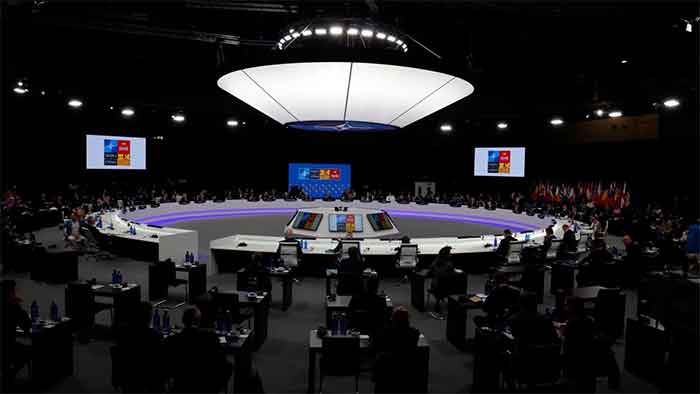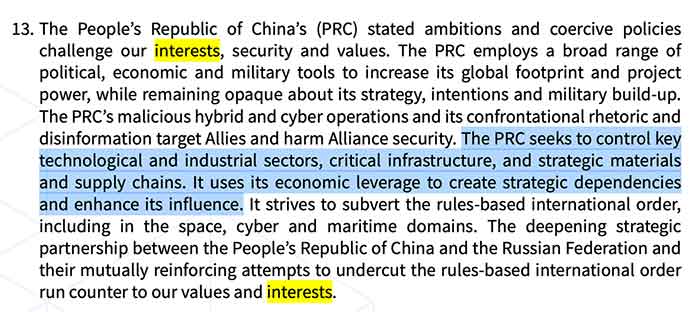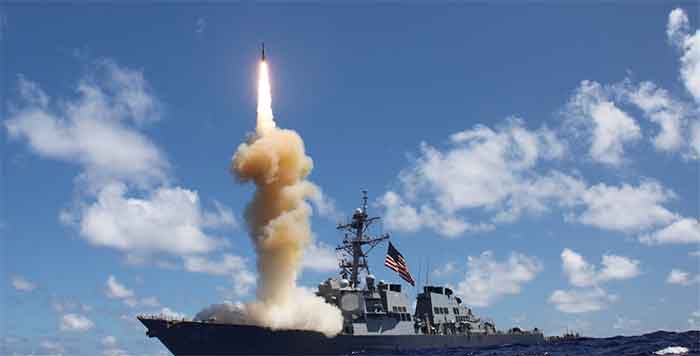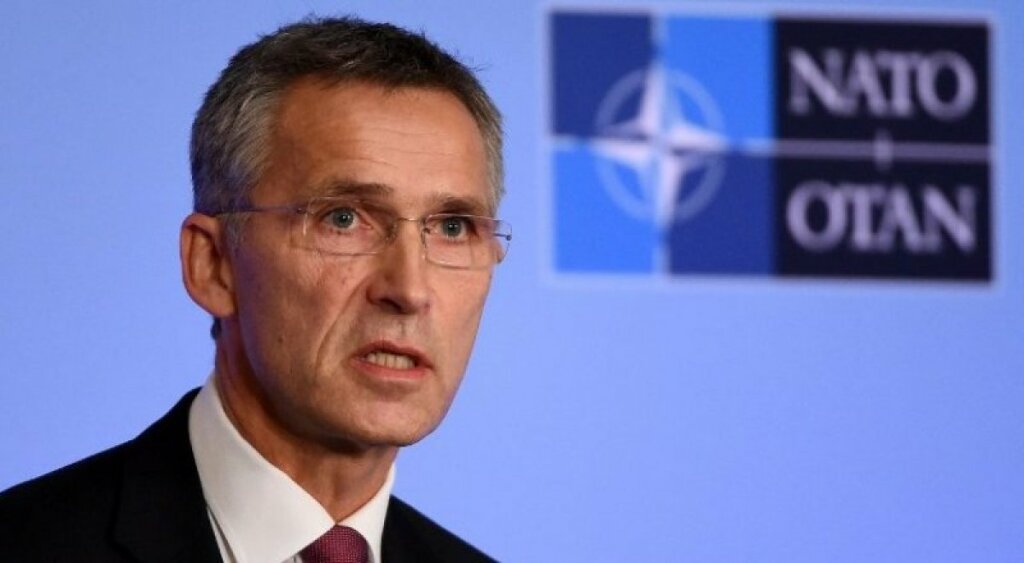
At the conclusion of this week’s NATO summit in Madrid, Spain, the members of NATO, including most European states as well as the United States and Canada, adopted a strategy document outlining plans to militarize the European continent, massively escalate the war with Russia, and prepare for war with China.
The document pledges to “deliver the full range of forces” needed “for high-intensity, multi-domain warfighting against nuclear-armed peer-competitors.”

In a sea change from the last strategy document, first published in 2010, the new NATO strategy document proclaims that “the Euro-Atlantic area is not at peace” – all but declaring that the alliance is at war. This is despite the fact that none of the members of the NATO alliance have declared any war within the “Euro-Atlantic area.”

The strategic framework document openly adopts the language of power politics, better known by its German name, Machtpolitik. It references the word “interests” seven times, declaring that both China and Russia challenge the “Alliance’s interests.”
The previous NATO strategic framework, published in 2010, used the word “interests” only once, in pledging to “enhance the political consultations and practical cooperation with Russia in areas of shared interests.”
While the 2010 document named Russia a “partner,” this year’s strategic framework proclaims Russia a “threat” and China a “challenge.” The new NATO strategy document explicitly justifies these designations by declaring that these countries “challenge our interests.”
It declares that “The PRC [People’s Republic of China] seeks to control key technological and industrial sectors, critical infrastructure, and strategic materials and supply chains. It uses its economic leverage to create strategic dependencies and enhance its influence.”

In order to preserve their “interests,” the allies pledge to “significantly strengthen deterrence and defense.”
Critically, the document asserts that the series of actions that triggered the war in Ukraine have been a success, declaring “NATO’s enlargement has been a historic success.” The Kremlin justified its invasion of Ukraine by claiming that Ukraine’s efforts to join NATO and the deployment of nuclear weapons on Russia’s border constituted a threat to its national security.
The NATO document doubles down on the expansion of the military alliance, declaring, “We reaffirm our Open Door policy…. Our door remains open to all European democracies that share the values of our Alliance.” It added, “Decisions on membership are taken by NATO Allies and no third party has a say in this process.”
The war now raging in Ukraine is the largest in Europe since the Second World War, and has already killed tens of thousands of Ukrainians and Russians. In describing the expansion of NATO as having been a success, the alliance effectively declares that these deaths, and many more to come, are acceptable costs for protecting the interests of the alliance’s members.
In response to the challenges to the alliance’s “interests,” the NATO members have pledged a program of militarization that will affect all aspects of society. It declares, “In an environment of strategic competition, we will enhance our global awareness and reach to deter, defend, contest and deny across all domains and directions, in line with our 360-degree approach.”
The document further states, “As long as nuclear weapons exist, NATO will remain a nuclear alliance” and the alliance pledges to “ensure a substantial and persistent presence on land, at sea, and in the air, including through strengthened integrated air and missile defense.” The document added that “NATO’s nuclear deterrence posture also relies on the United States’ nuclear weapons forward-deployed in Europe and the contributions of Allies concerned.”
The achievement of the goals set out in the document requires a massive expansion of the troops, munitions, and supply changes necessary for war fighting. “We will deter and defend forward with robust in-place, multi-domain, combat-ready forces, enhanced command and control arrangements, prepositioned ammunition and equipment and improved capacity and infrastructure to rapidly reinforce any Ally, including at short or no notice.”
The NATO strategy document does not acknowledge or recognize any competing priorities for military resources. The words “hunger,” “poverty,” and “unemployment” do not appear, nor is there any reference to the COVID-19 pandemic, which has killed tens of millions worldwide and one million in the United States alone.
The comments of US president Joe Biden were fully consistent with the tone of this document.
At a post-summit press conference, Biden boasted: “We provided Ukraine with nearly $7 billion in security assistance since I took office. In the next few days, we intend to announce more than $800 million more, including a new advanced Western air defense system for Ukraine, more artillery and ammunition, counter-battery radars, additional ammunition for the HIMARS multiple launch rocket system we’ve already given Ukraine and more HIMARS coming from other countries as well.”
He added that the total commitment of the US allies included “nearly 140,000 anti-tank systems, more than 600 tanks, nearly 500 artillery systems, more than 600,000 rounds of artillery ammunition, as well as advanced multiple launch rocket systems, anti-ship systems, and air defense systems.”
Yet when asked about the costs to the American public of the war, Biden did not express that this was even a consideration in determining that this was not even taken into consideration.
At the press conference, Biden was asked by a reporter, “G7 leaders this week pledged to support Ukraine, quote, ‘for as long as it takes.’ And I’m wondering if you would explain what that means to the American people—‘for as long as it takes.’ Does it mean indefinite support from the United States for Ukraine? Or will there come a time when you have to say to President Zelenskyy that the United States cannot support his country any longer?”
Biden replied, “We are going to support Ukraine as long as it takes.”
Another reporter asked about the “high price of gasoline in the United States and around the world… How long is it fair to expect American drivers and drivers around the world to pay that premium for this war?
Biden reiterated, “As long as it takes.”
Biden’s declaration is an effectively unlimited pledge of social resources for the war effort. Having gutted COVID-19 funding, meaning that uninsured workers will be forced to pay out of pocket for vaccines and COVID-19 hospitalization, the American ruling class is instead pressing ahead with funneling vast social resources into the war effort.
The plans outlined in the latest NATO strategy document will have incalculable consequences, not only for the war itself, but also through the endless diversion of social resources to military spending, which will be coupled with the slashing of spending for health care and pensions, and reductions in workers’ wages.
As workers enter into struggle all over the world against the surging cost of living, it is critical that they take up as a critical demand the struggle against war and militarism.
Originally published in WSWS.org














































